Funny how decisions are made sometimes, and how unpredictable forces shape the way things turn out.
For 80 years, Alamedans have known the Alameda Park Community Church building– today’s Subud Center — as a friendly-looking building on an island just off Regents Drive at Mason.
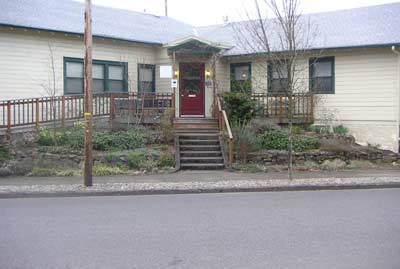
Passersby inclined to wonder about its history perhaps think it was a big house originally, or a community center. Potluck dinners, friendly gatherings, sing-alongs, dances, lectures, church services, meditation sessions: Yes, this building has seen it all.
But it very nearly didn’t get built. Check out this story from The Oregonian on October 14, 1921:
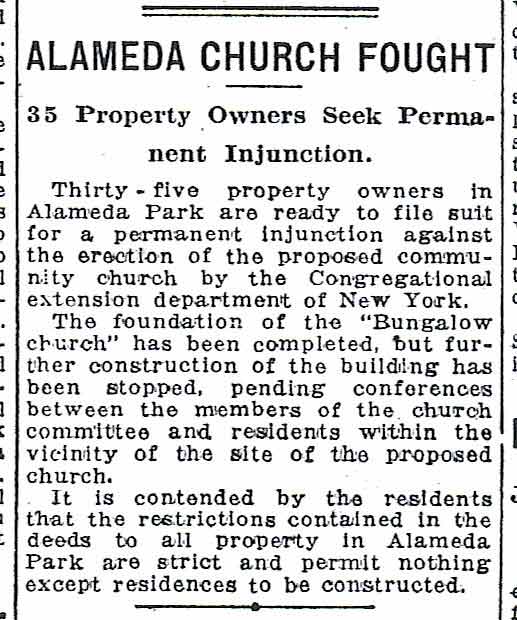
And this was the second hurtle the project had to overcome, after being relocated, before work really got underway, from its original and intended location one block west near the corner of NE 30th and Mason. According to the building records, and a handed-down memory from Bruce Morrison, the “little boy” who grew up in my house (who was 90 when I interviewed him), it didn’t take long for his dad Walter Morrison to make a fuss when the builder began site preparation on the lots next to ours. Yes, there was a significant amount of construction going on in “The Park,” as in Alameda Park, the early name of our neighborhood.
But when Walter found out the building adjacent to his house was going to be a church, he took his protest directly to the Bureau of Buildings downtown, and to the Alameda Land Company, which had promised to build nothing but homes in the area until 1929. Like many other early homeowners in the area, the Morrisons purchased here because it was solely residential: No commercial or other buildings were permitted within the confines of Alameda Park. The Morrisons were church-going people…it seems that Edith and Walter just weren’t wild about the constant flow of traffic in front of their house.
So, in response to Walter’s initial complaint, the city worked with the church and all agreed to move the location to the island off Regents Drive one block east, “Block C” as it is known in the property records.
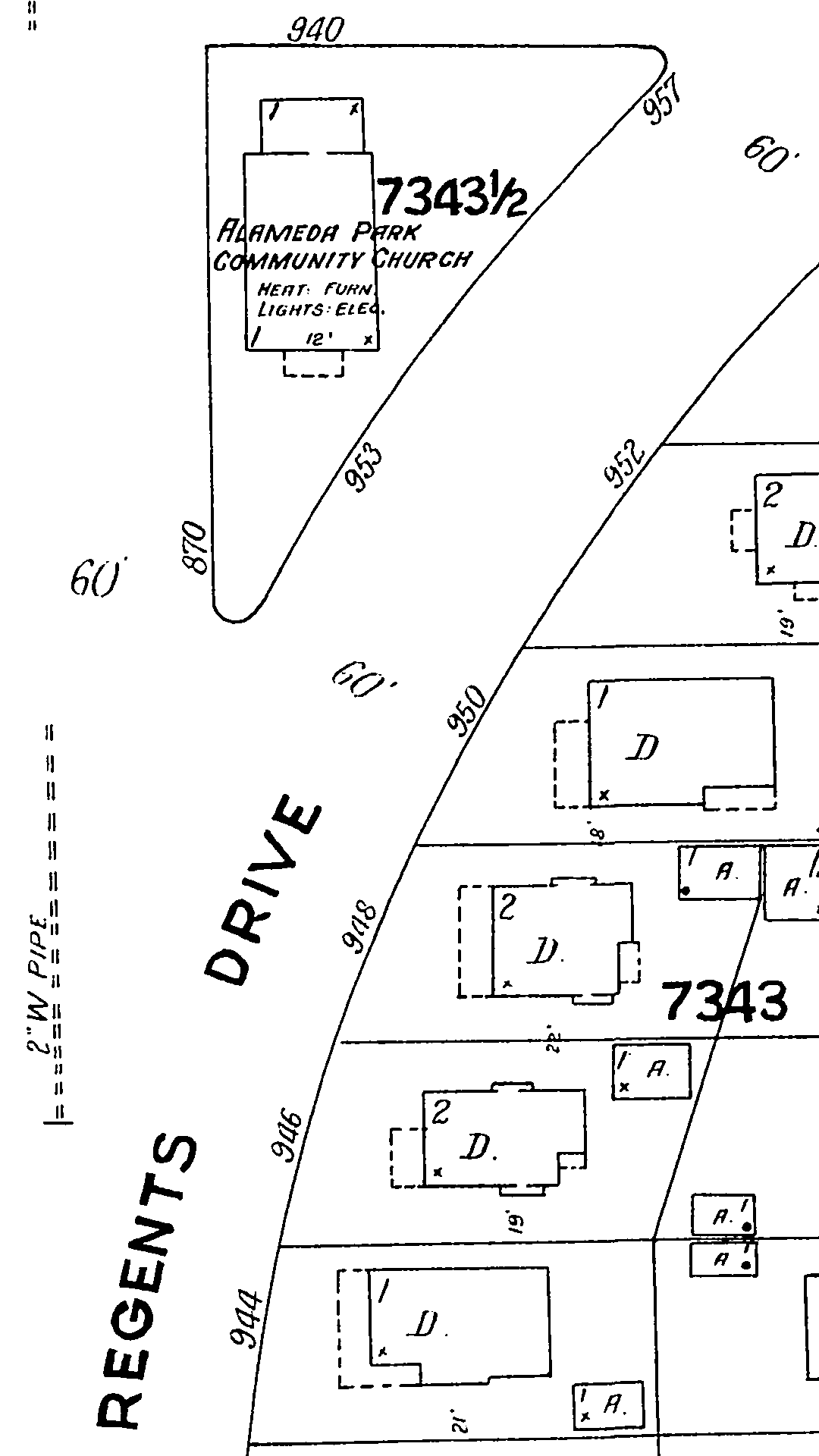
Detail from Sanborn Map Volume 5, Plate 586, 1924.
Logistically, this wasn’t too big a problem because not much work had been done on the initial site. The crew picked up its tools and moved one block east. Layout, site preparation and excavation followed, and then the foundation went in. And that’s when the 35 property owners raised a ruckus and shut down the construction. Here’s the next story, from The Oregonian on January 14, 1922:
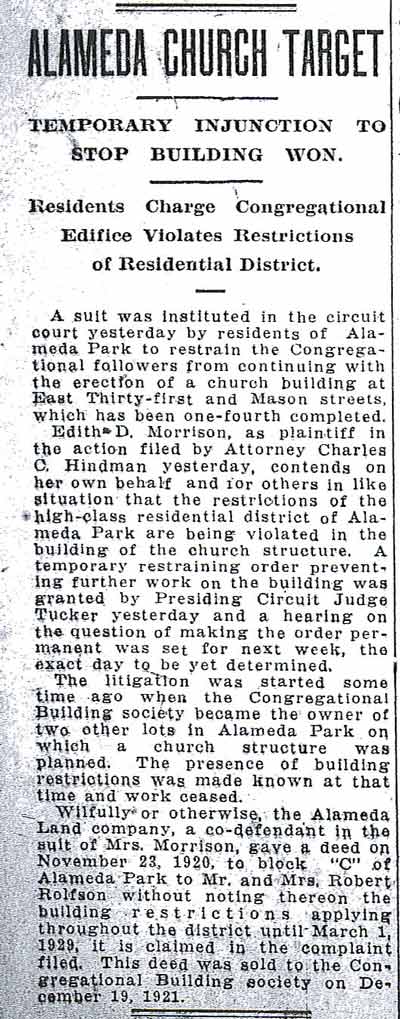
Sounds messy, doesn’t it? The developer got involved, and other property owners. I can imagine some tense meetings and feelings between neighbors. Not nice. It was, however, pretty neat to find this clipping, which confirms the handed-down memory from Bruce Morrison…it’s in the next to last paragraph above.
So what happened next? Read on, from The Oregonian on January 29, 1922:
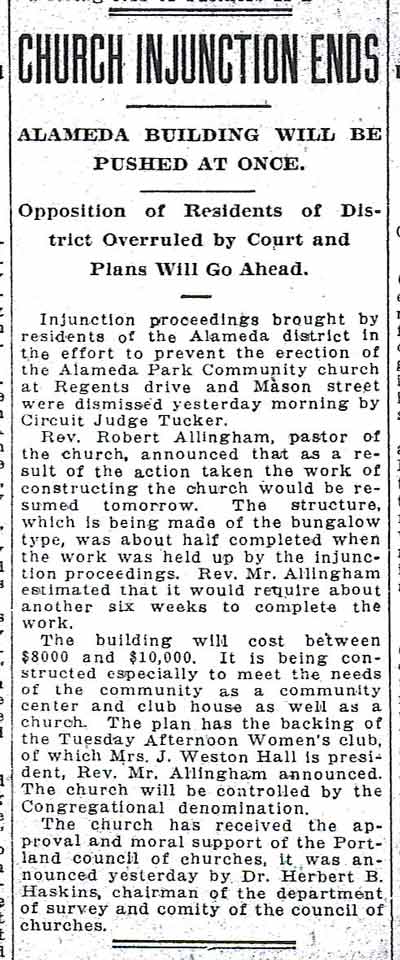
So the judge dismissed the suit, some reasonable and community-minded behind-the-scenes agreements were probably made, and the construction was cleared to move forward at full speed. Which it did.
Built at a total cost of $5,000, the church was actually a kit, constructed by the Redimade Building Company, and plumbed by Alaska Plumbing and Heating for the Congregational Church Building Society, headquartered in New York City. An additional wing of the building was added in 1924 by the Traverse-Bennett Construction Company. Check out these drawings of the original church.
After dedication on Mmarch 12, 1922, The Rev. H.C. Johnson took over the permanent post from The Rev. Robert Allingham, and all kinds of good works, events and gatherings began to take place on “Block C.” Read more from The Rev. Allingham about what the experience of opening the church was like.
In a deeply ironic post-script to history, I am compelled to share the rest of this story from the turn-the-other-cheek department: When the Methodists filed the building permit to build the Fremont United Methodist Church at 27th and Fremont, The Reverend Allingham and the leadership at Alameda Park Community Church filed an injunction to prevent them from building their church.
In an article that appeared in The Oregonian, the Rev. Allingham says: “We do not want to have trouble with our Methodist brethren, but we do think that two churches in the Alameda community are too many.” Read on, from The Oregonian on January 6, 1922:
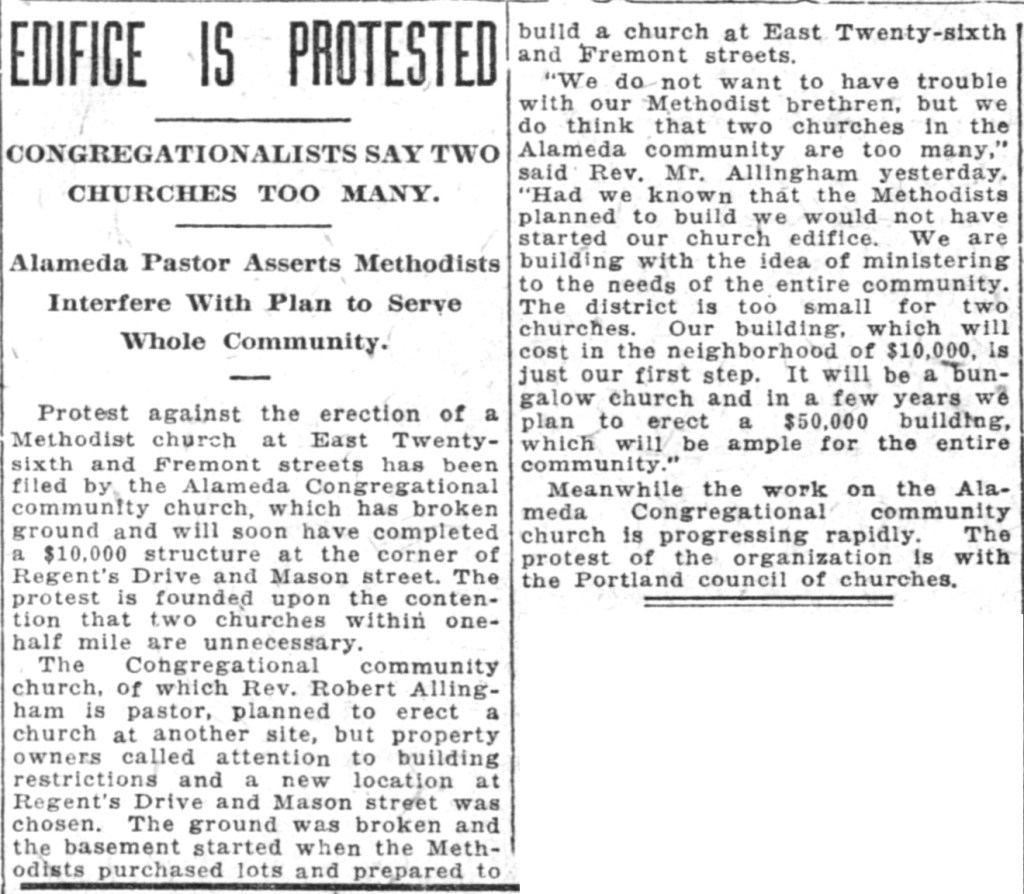
If you’ve read this far, you deserve a prize, so here are all the photos I’ve been able to find of the building.
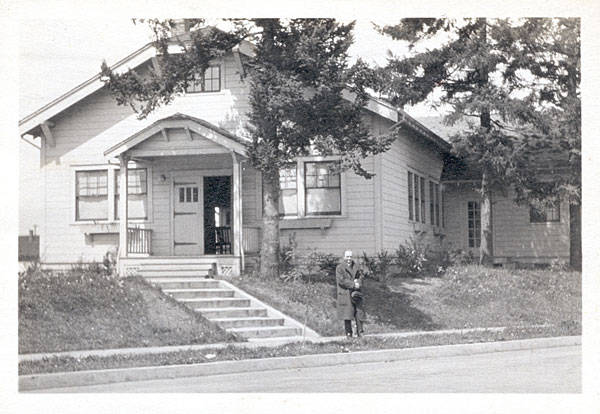
The Rev. H.C. Johnson at the Alameda Park Community Church, undated. Courtesy of the Frank L. Moore Collection at the Amistad Research Center and Lousiana State University Digital Library.
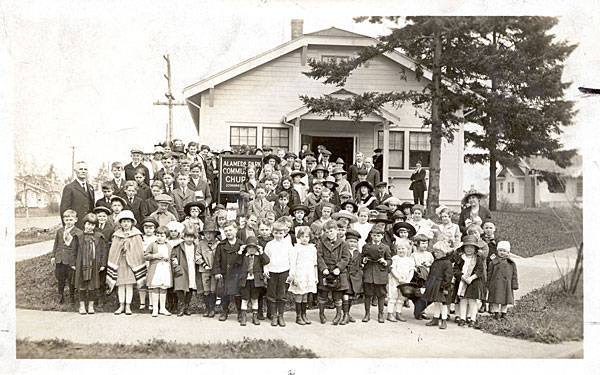
Alameda Park Community Church, 1923. Looking north, Regents Drive to the right and NE 31st Avenue to the left. Courtesy of the Frank L. Moore Collection at the Amistad Research Center and Lousiana State University Digital Library.
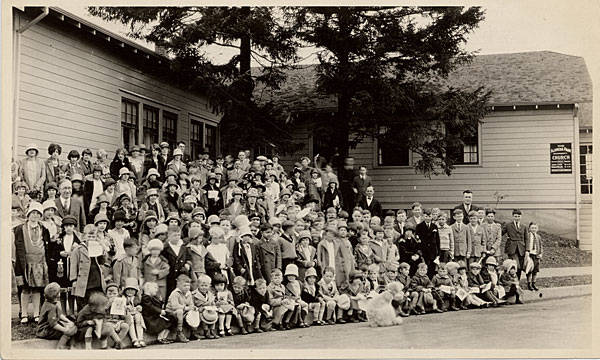
Alameda Park Community Church, 1930. Courtesy of the Frank L. Moore Collection at the Amistad Research Center and Lousiana State University Digital Library.
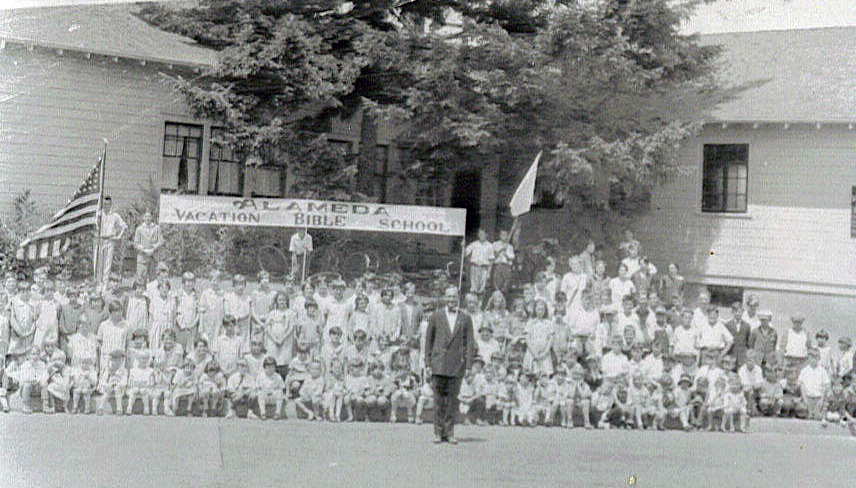
Alameda Park Community Church, summer 1924. The Rev. H.C. Johnson and the Vacation Bible School. Courtesy of the Morrison Family Collection.
Do you know something more about the “Bungalow Church?” Drop me a note.
By the way, this wasn’t the end of neighborhood protests. Wait til you hear about the next one, made a few years later against a campground planned for 33rd and Mason!

Doug,
Again, a very interesting story about our neighborhood. Please keep up the very micro-local journalism.
John
This is a fantastic piece. Your neighbors are very lucky to have you excavating through the layers to find the stories.
I’m Doug
Hello
👋 😀
Hi Doug,
I appreciate your research. I am a 20+ year Alameda resident (still a newcomer according to my neighbors), so I really enjoy learning more about the history of our neighborhood. Please let me know if I can be of any help. I have been meaning to visit the Oregon Historical Society library for many years…
Mark
Hi Mark. Thanks for dropping by for a look at the blog. I appreciate your encouragement.
You know what would be cool…if you could interview some of your older neighbors who still think of you as a newcomer and capture their stories and memories of life in the neighborhood. I’d be glad to share with you a template list of questions that I’ve assembled over time for oral histories. Never know what we might learn.
Regarding OHS: there is very little information there relating specifically to Alameda. Three or four photos in the neighborhood file and a handful of shots of specific houses in the neighborhood. All of the information I’m gathering–from building permits to old newspaper articles to oral histories–will be headed there eventually. Let me know if you’d like to talk about oral histories (maybe I’ll do a post on this too).
Doug
Hi,
We just wanted to say Hi and thanks for your web site and the story on the church at Regents / 31st.
We moved right across the street from the church 3 years ago from New Orleans and are happy to know the history of the building.
One suggestion to fix the page a little: The credits to the old photographs at the end of your story have a few mistakes: “Louisiana” is missing its first letter “I”. Also the photographer is “Frank B. Moore”, not “Frank L. Moore”. I don’t mean too sound picky, I only noticed the Louisiana spelling error as we are from there. Perhaps next time you get to web site updates…. Amazingly Frank Moore took pictures right in front of my old house in New Orleans. The odds must be one in billions he would have been in front of my current one in Portland!
Thanks for the LouIsiana catch, which I’ve fixed. I’ve also added the story as a page of its own under Alameda Stories. But the collection that the photos is from is indeed called the Frank L. Moore collection. Checked to be sure. Named for the head of the church at the time the building was dedicated. The story reports he was there at the opening.
Greetings to you, Doug!
So, SUBUD in New Orleans did NOT die with Bapak …
I was opened during the “wild” period of the late 1960s, while a graduate student at Stanford University.
I re-married three years ago and moved here from Falls Church, VA. My wife’s home has been in Gretna for more than half her life — and we are well up in our eighties.
My nearest family are grandchildren in Nashville, TN.
Best regards and blessings to you and your family, Doug!
Ernest